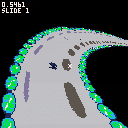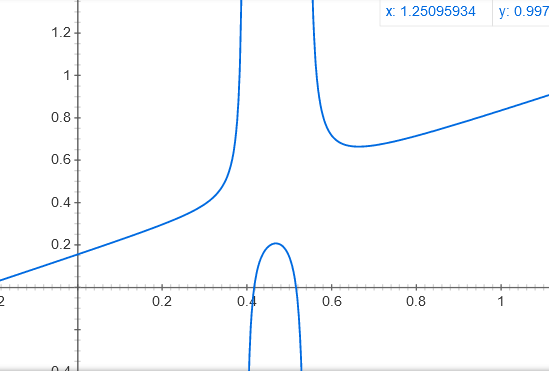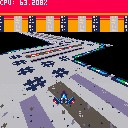

I’ve been curious why smooth, textured curves were never a thing in graphics. Usually just polygons, or curves made out of polygons. After I saw this video on bezier curves, https://www.youtube.com/watch?v=aVwxzDHniEw thought I had enough tools to figure out why for myself. The video mentions two major difficulties when working with them: It’s hard to solve cubic polynomials, and estimating distance along a bezier curve isn’t precise.
If your goal is texturing them, it turns out you don’t even need to estimate distance. For any 2 bezier curves, they all share a start t value of 0 and an end t value of 1. You just have to scale up whatever t value you’re on to the height of your texture and draw your tline(), and it looks great!
The inability to solve cubic polynomials was tricky. Stack overflow has methods for drawing curves. I can’t quite figure them out, but they appear too slow for pico 8 and take a bit of space. Originally, I would just guess a T value and see if it was one pixel away, and go to the next one. Then I saw this video on newton's method https://www.youtube.com/watch?v=hHeq-SB8uVg
Which still uses guessing, but no checking and guessing again. And, if your first guess is close enough, you don’t even need to have a guess loop! I tried to put something together for that. Wowzers, you have to be really careful on how you approach +/- infinity. I had to precompute all the noteworthy points (the 2 local extrema, and the point in between) Newton's method acts up in areas of low velocity, so, I always approach the local extrema from t0, t1, or the time in between the extrema. (unless the point in between is starting to become a point of low velocity) When this cubic bezier function works, it’s such a nice smooth curve. I have it up on demo slide 2.
Picture generated in google using this equation: x-(393 x^3 +-552x^2+252x-39)/(3393x^2 + 2-552*x+252)




More mode 7 posts I say!
I was wondering if pico 8 could be used for making a fast mode 7 multiplayer racing game with the new tline function.
Unfortunately pixels near to the camera look huge if you want to have a racetrack of a decent size.
This solution uses another tline to render a gravel and grit texture to break up the huge pixels. Is there a name for that? I guess it's close to mipmaping.
I think It looks pretty good at slow and medium speeds. At fast speeds it looks a bit repetitive. Perhaps a different effect could be used at high speeds.
This video helped me figure out the mode 7 equations: https://www.youtube.com/watch?v=ybLZyY655iY
I've been chaotically jumping between projects. I do not know if I will make this into a game or not.







 9 comments
9 comments
